
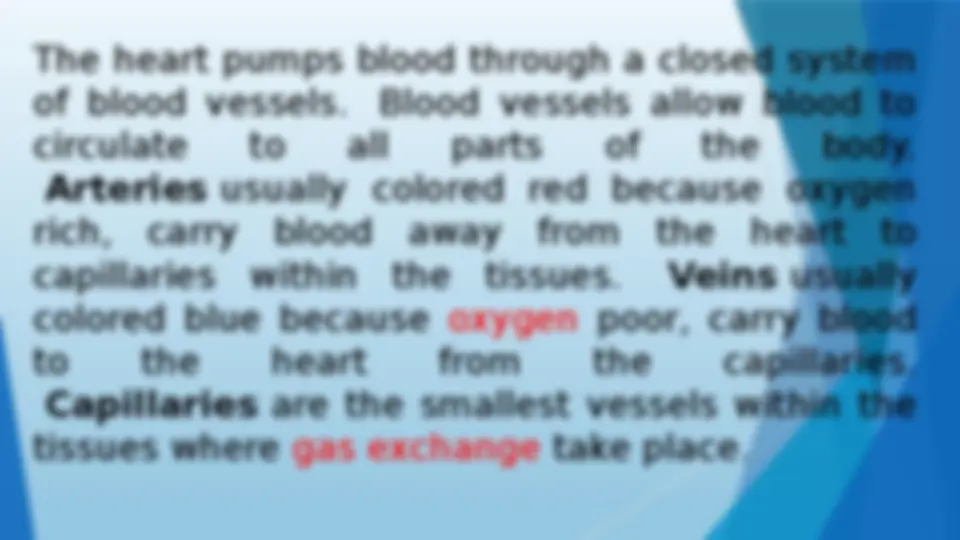
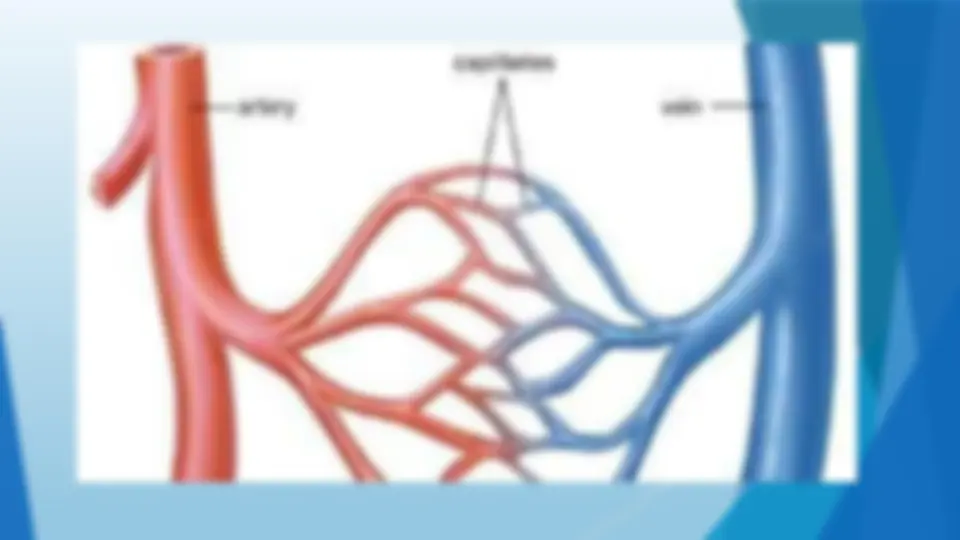
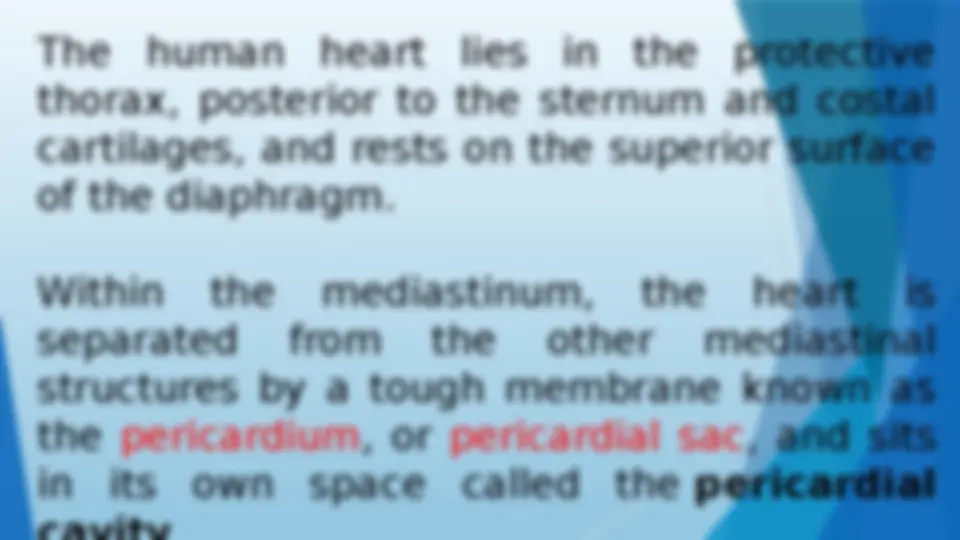
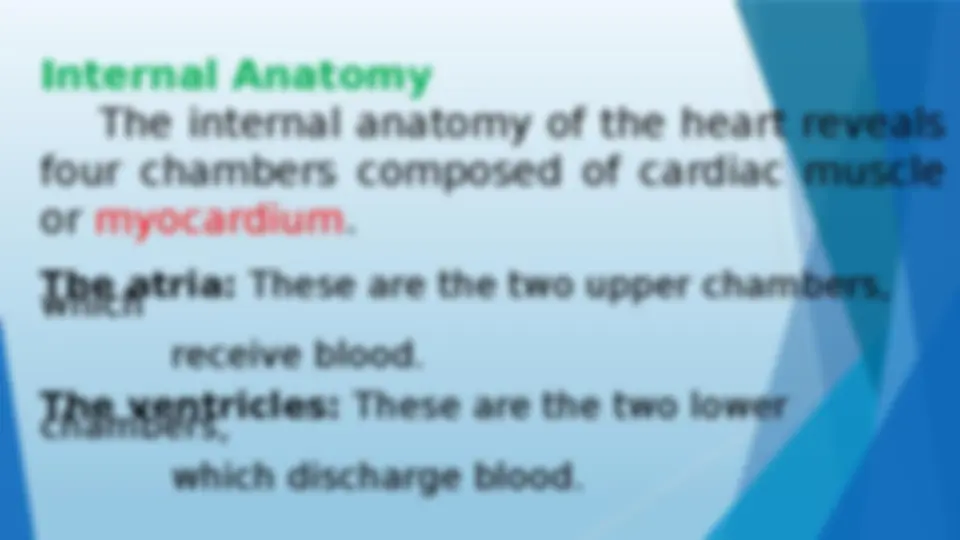
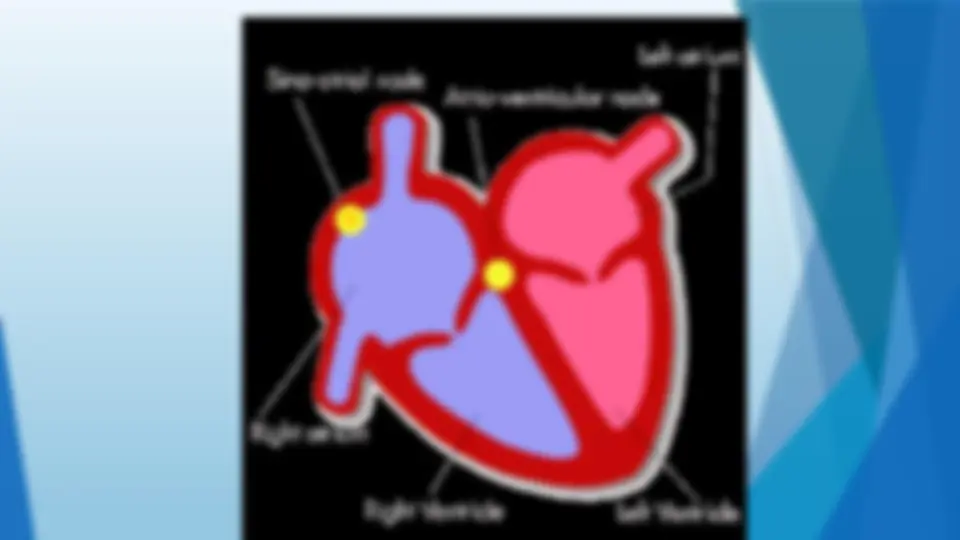
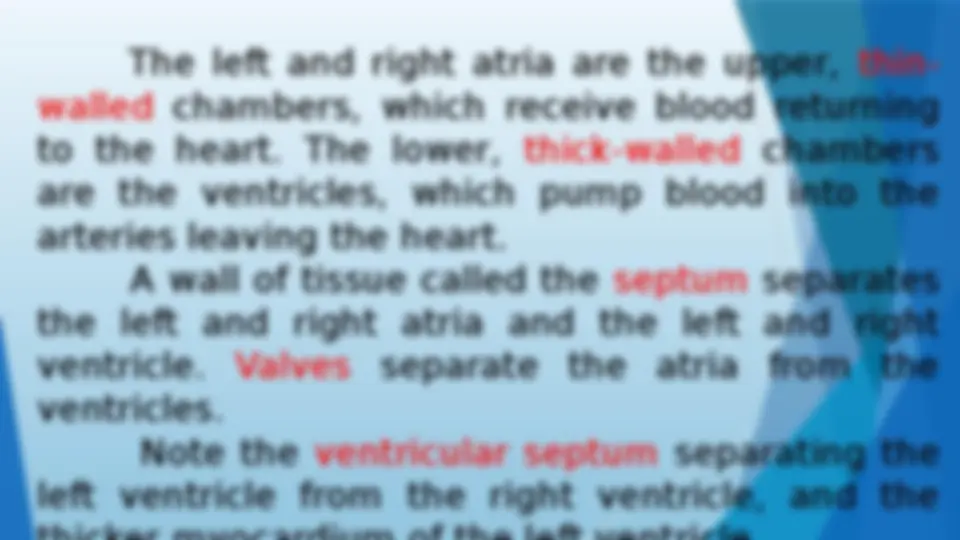
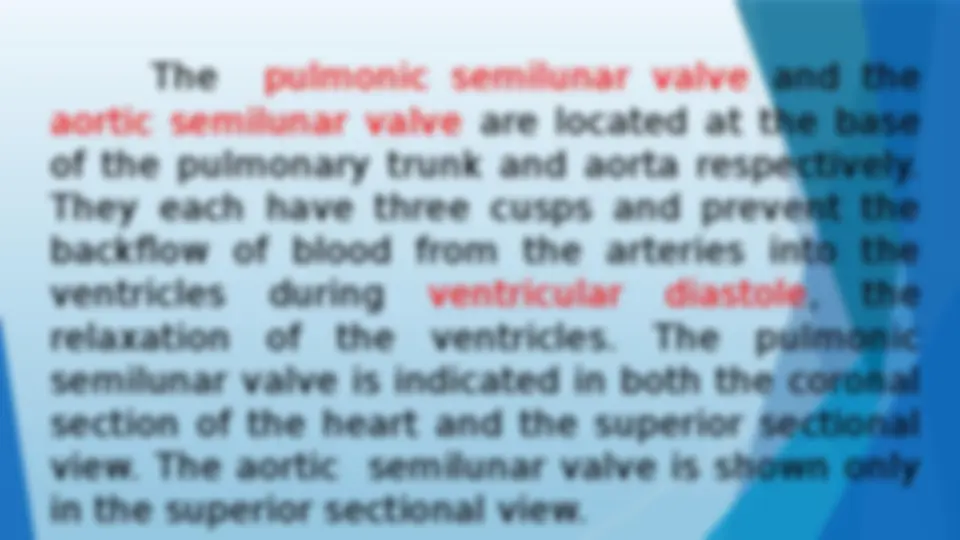
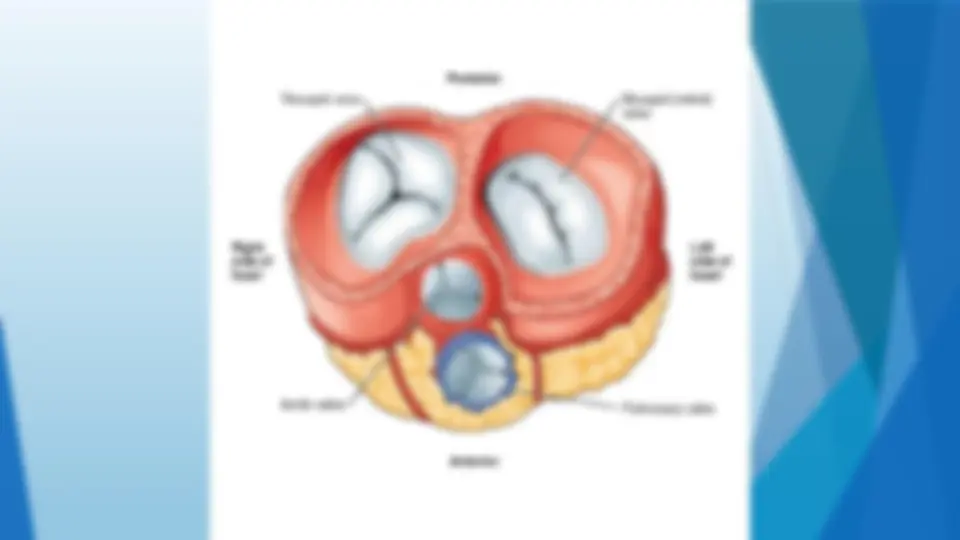
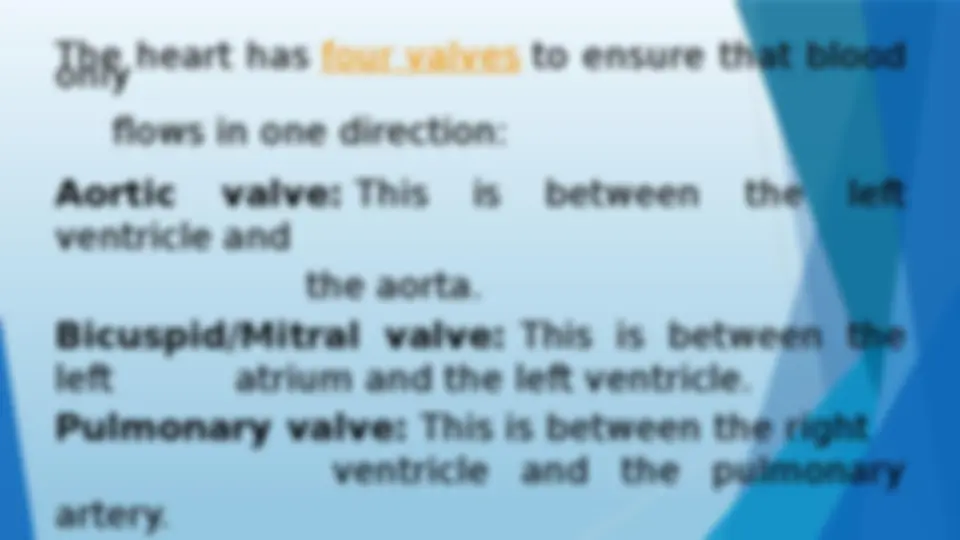
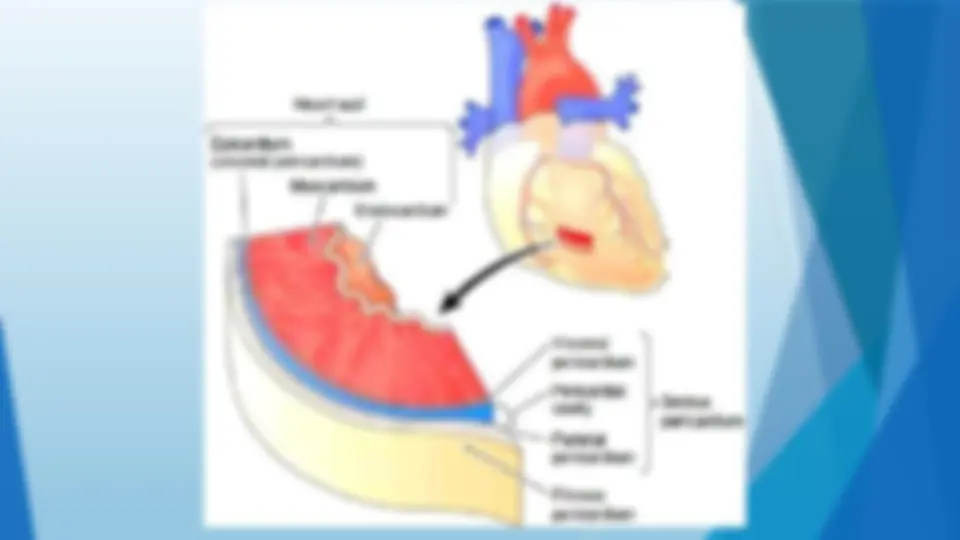
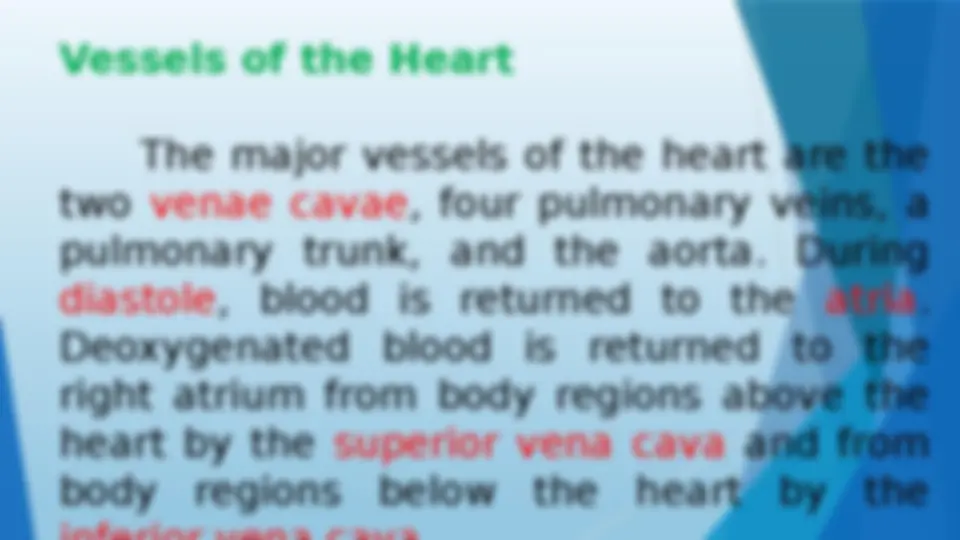
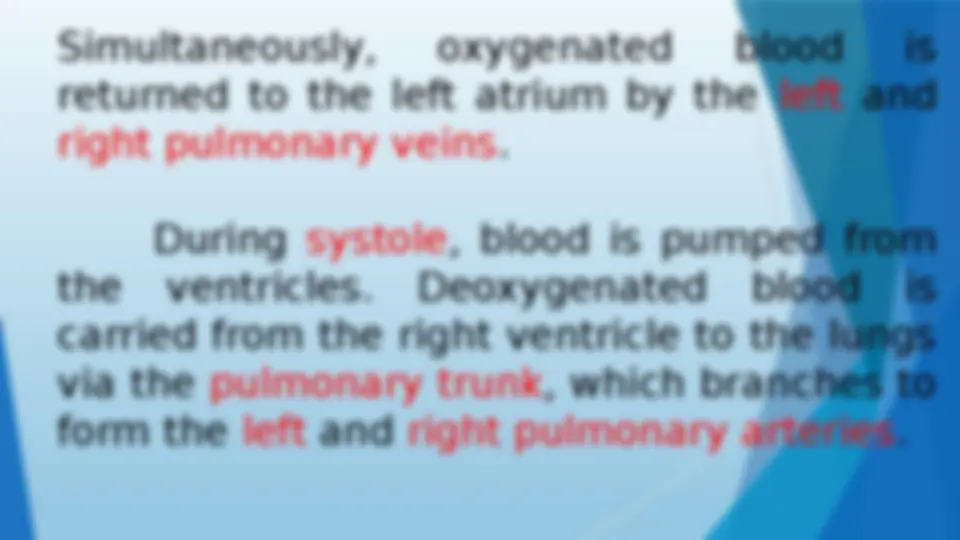
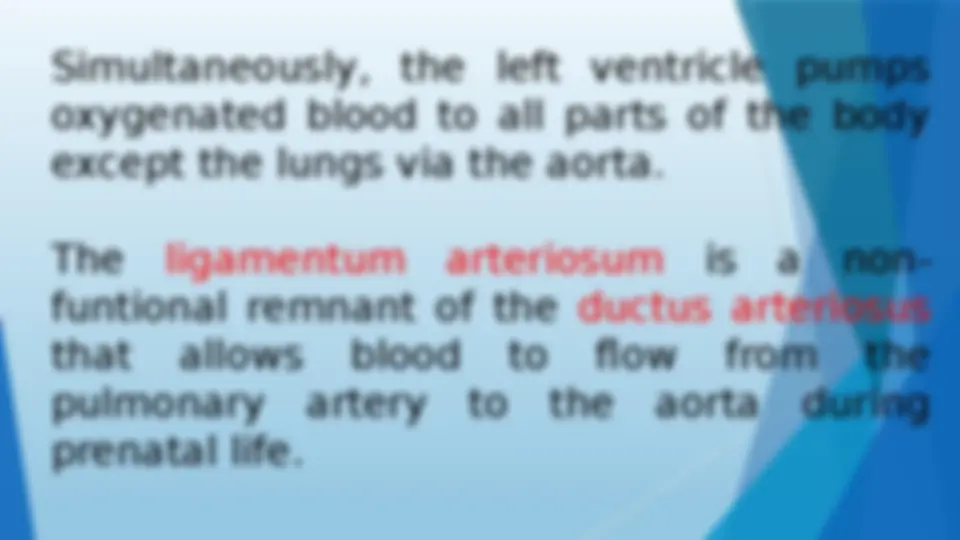
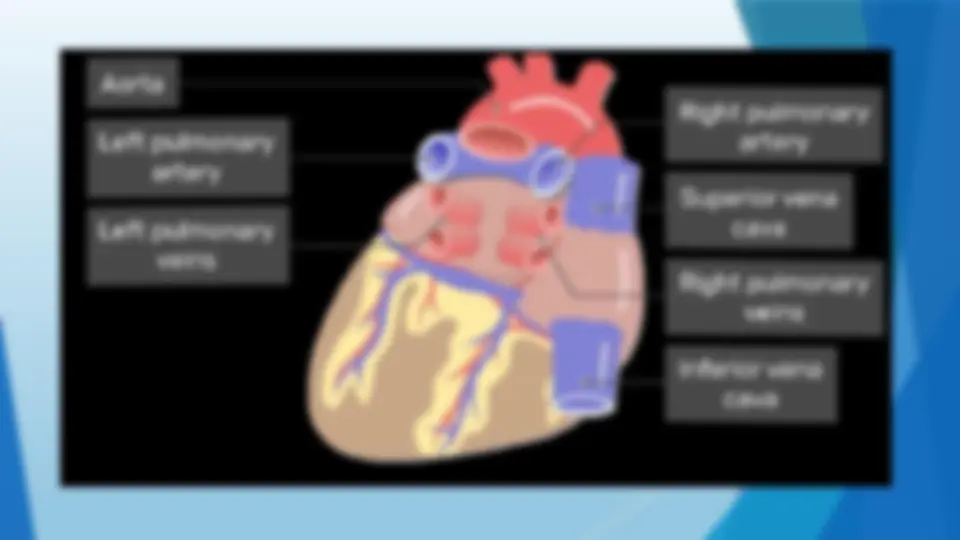
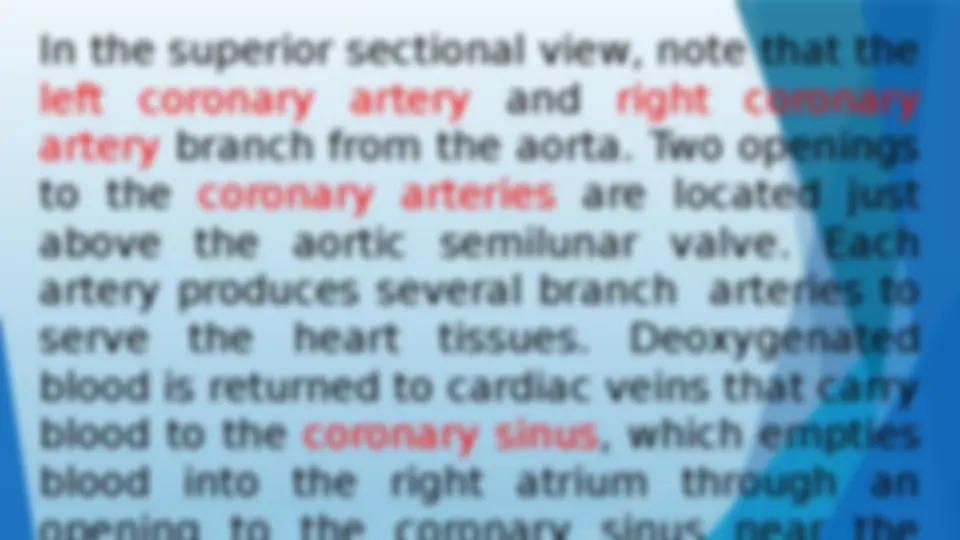
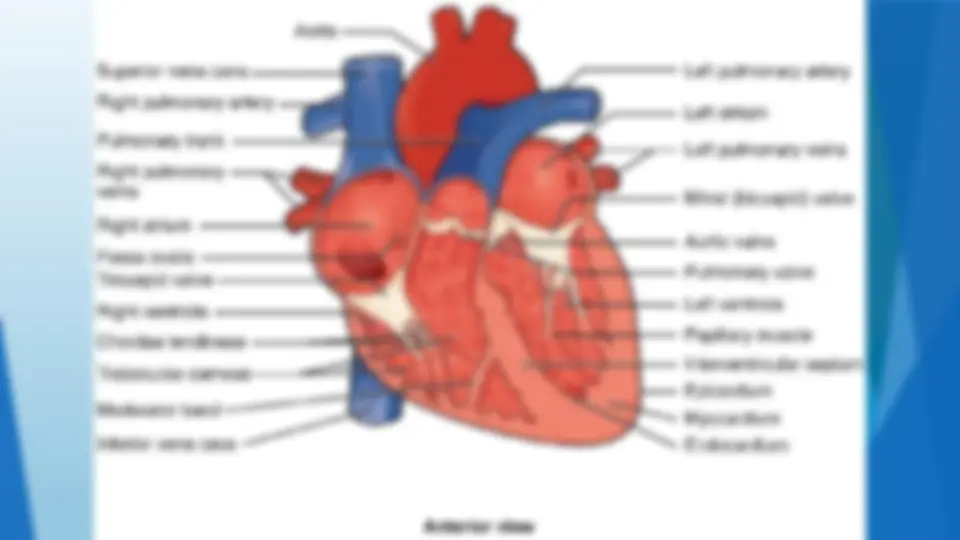
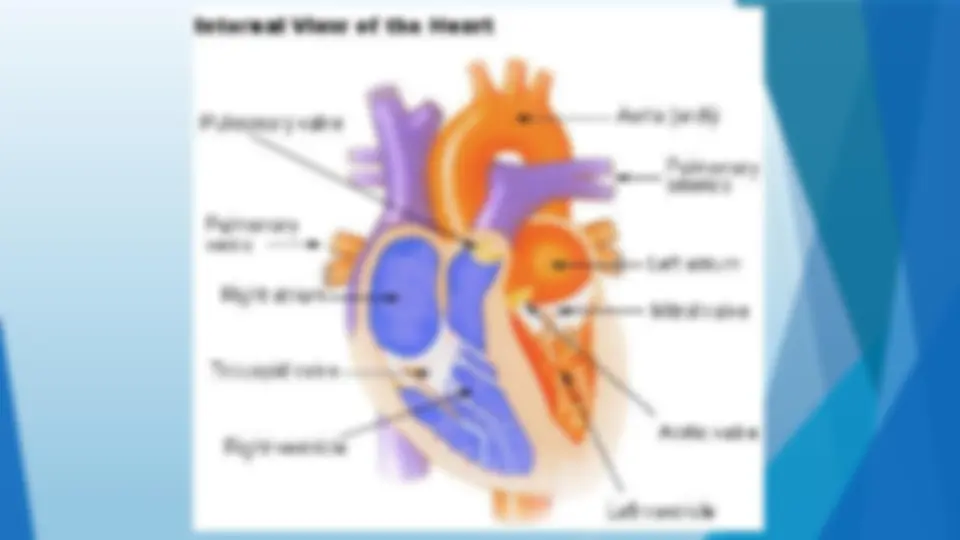
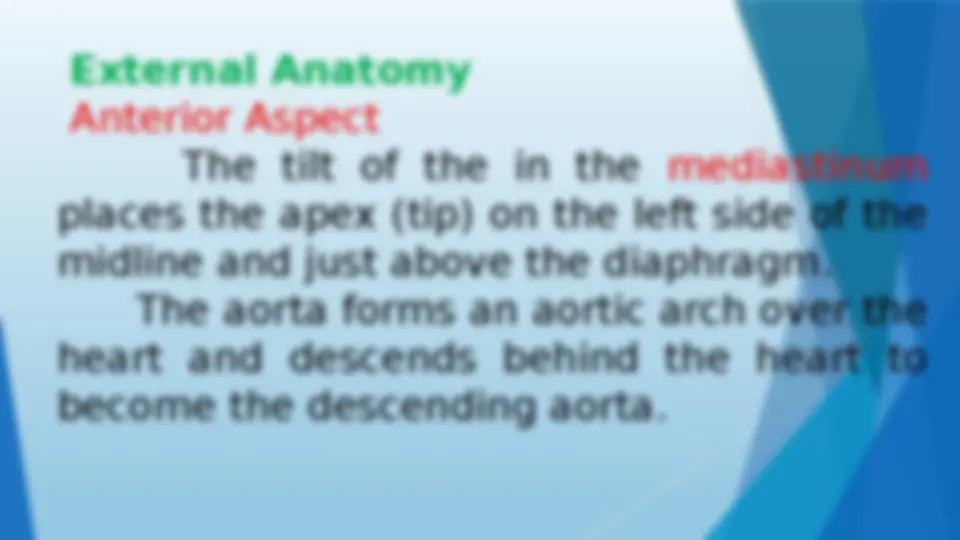
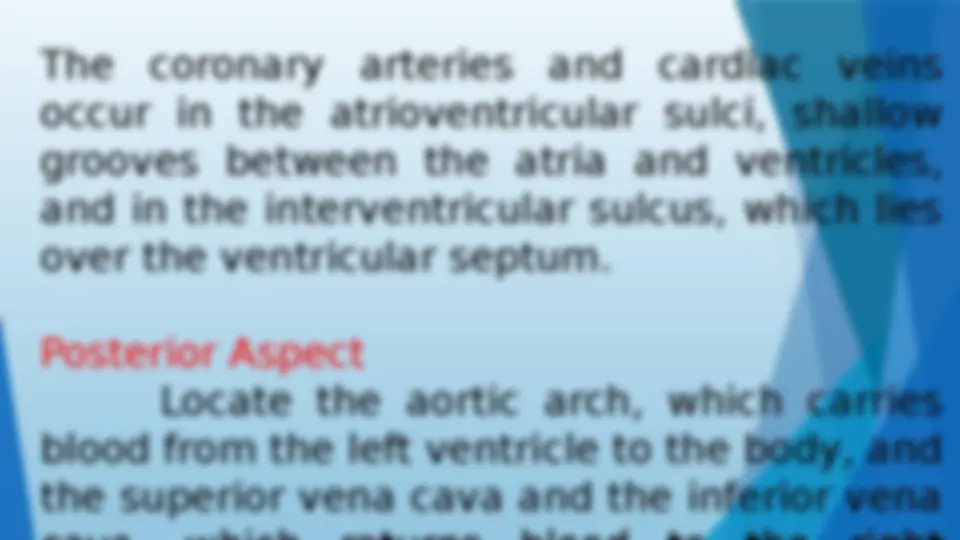
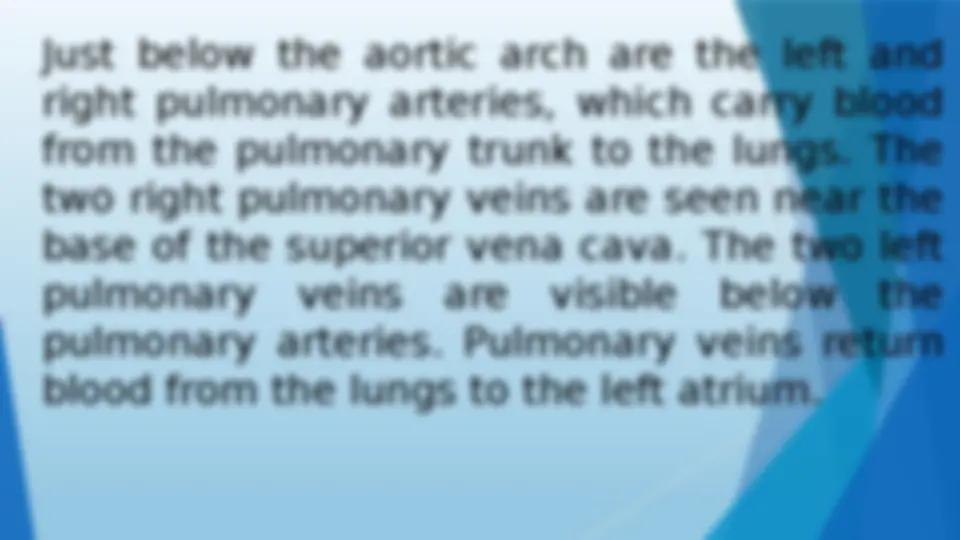
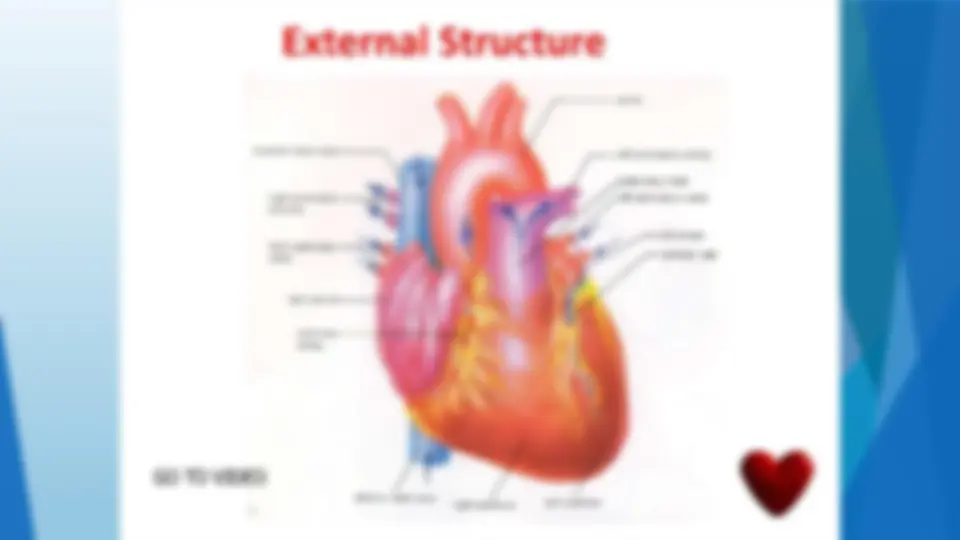
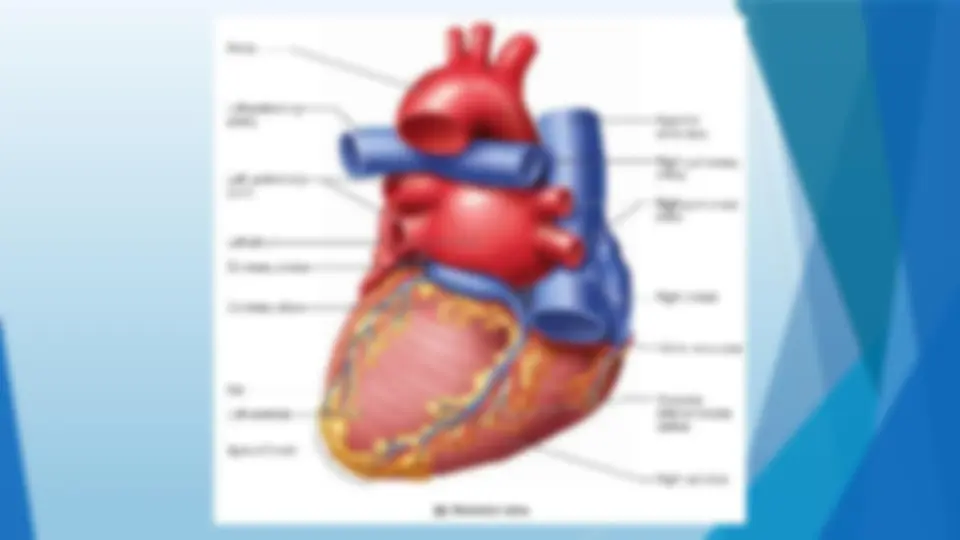
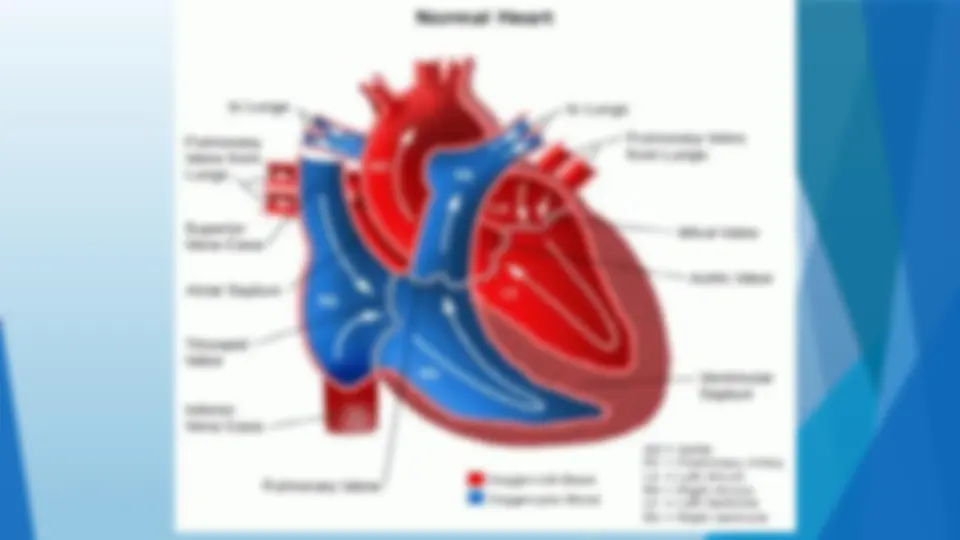
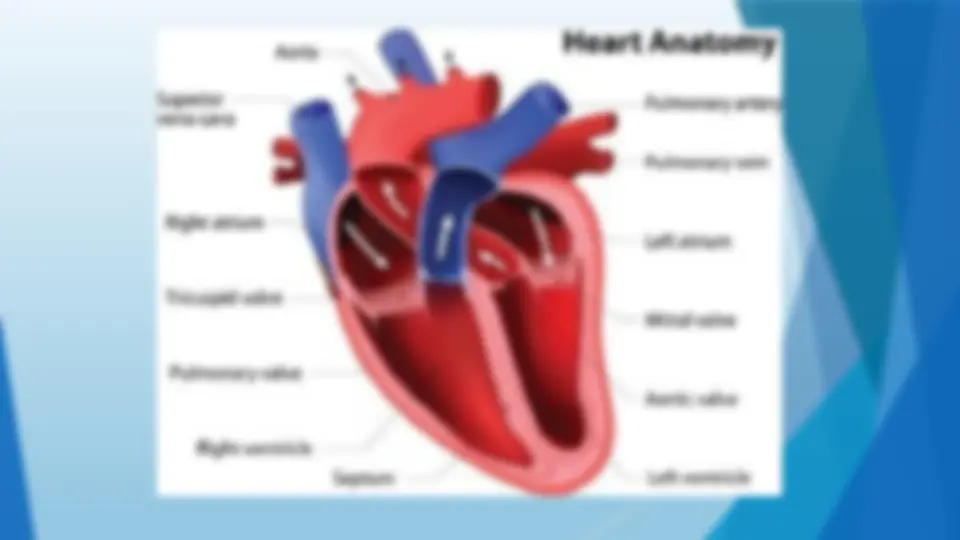


Study with the several resources on Docsity

Earn points by helping other students or get them with a premium plan


Prepare for your exams
Study with the several resources on Docsity

Earn points to download
Earn points by helping other students or get them with a premium plan
Community
Ask the community for help and clear up your study doubts
Discover the best universities in your country according to Docsity users
Free resources
Download our free guides on studying techniques, anxiety management strategies, and thesis advice from Docsity tutors
Summary of the anatomical Heart
Typology: Assignments
1 / 32

This page cannot be seen from the preview
Don't miss anything!

























The atria: These are the two upper chambers, which receive blood. The ventricles: These are the two lower chambers, which discharge blood.
The left and right atria are the upper, thin- walled chambers, which receive blood returning to the heart. The lower, thick-walled chambers are the ventricles, which pump blood into the arteries leaving the heart. A wall of tissue called the septum separates the left and right atria and the left and right ventricle. Valves separate the atria from the ventricles. Note the ventricular septum separating the left ventricle from the right ventricle, and the
The pulmonic semilunar valve and the aortic semilunar valve are located at the base of the pulmonary trunk and aorta respectively. They each have three cusps and prevent the backflow of blood from the arteries into the ventricles during ventricular diastole, the relaxation of the ventricles. The pulmonic semilunar valve is indicated in both the coronal section of the heart and the superior sectional view. The aortic semilunar valve is shown only in the superior sectional view.
Walls of the Heart The walls of the heart consists of three layers. The thick myocardium is composed of cardiac muscle tissue. It is covered by two thin serous membranes attached to the muscle tissue: an inner endocardium and an outer epicardium or visceral pericardium. External to the epicardium is the double-layered parietal pericardium, composed of an inner serous membrane and an outer fibrous membrane. The pericardial cavity lies between the epicardium and parietal pericardium. Fluid secreted by the serous membranes reduces friction, enabling the heart to move freely within the pericardial sac.